Anyone else miss the days of getting stickers and gold stars every time you did something well in elementary school?
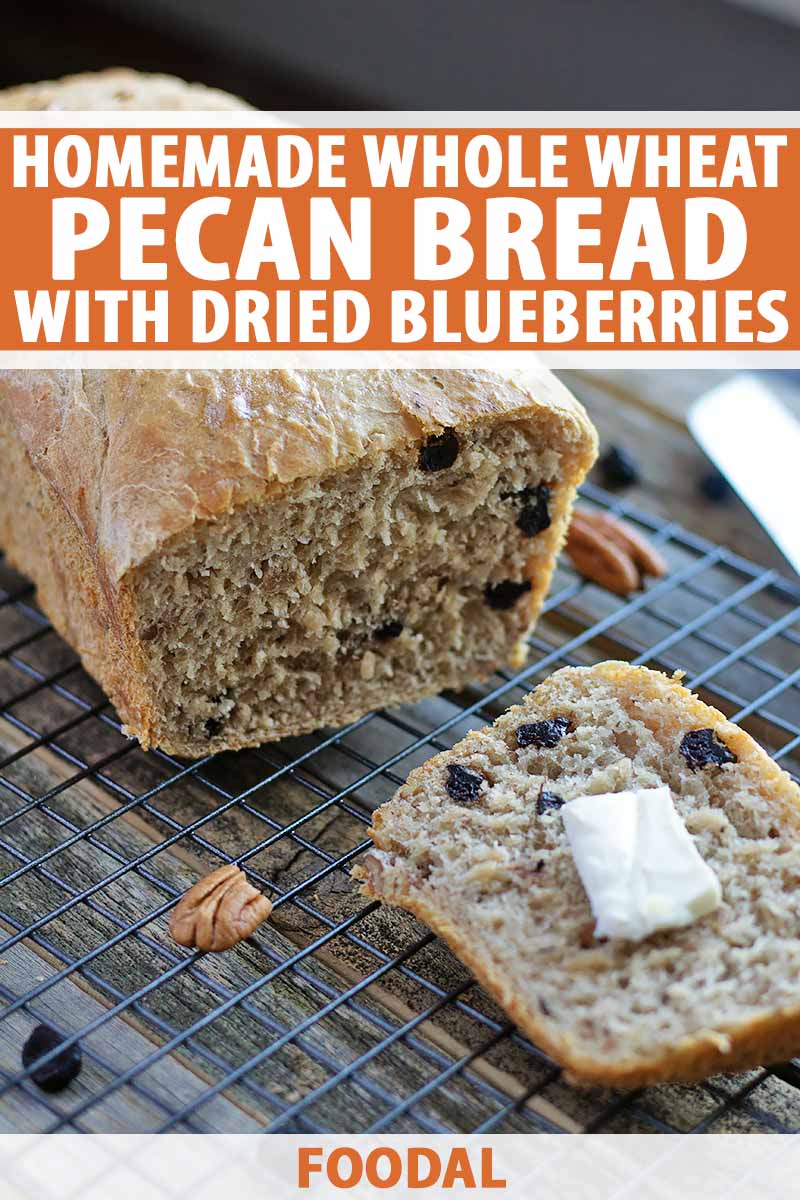
Cleaned your cubby? Gold star. Turned in your homework? Choose a sticker.
Every little accomplishment was recognized and celebrated, urging you on to grow into a (somewhat) responsible and successful adult.
But then adulthood actually hits, and praise and recognition are saved for annual reviews and really big milestones. No more stickers.
While it’s understandable that gold stars aren’t distributed quite as liberally anymore, I do feel like we all deserve to recognize and celebrate small accomplishments in our lives. And that’s why I love making bread.
Sure, it’s exciting when sweet cookies turn out just right or a steak comes out perfectly medium-rare, but there’s just something so gratifying about making a loaf of bread.
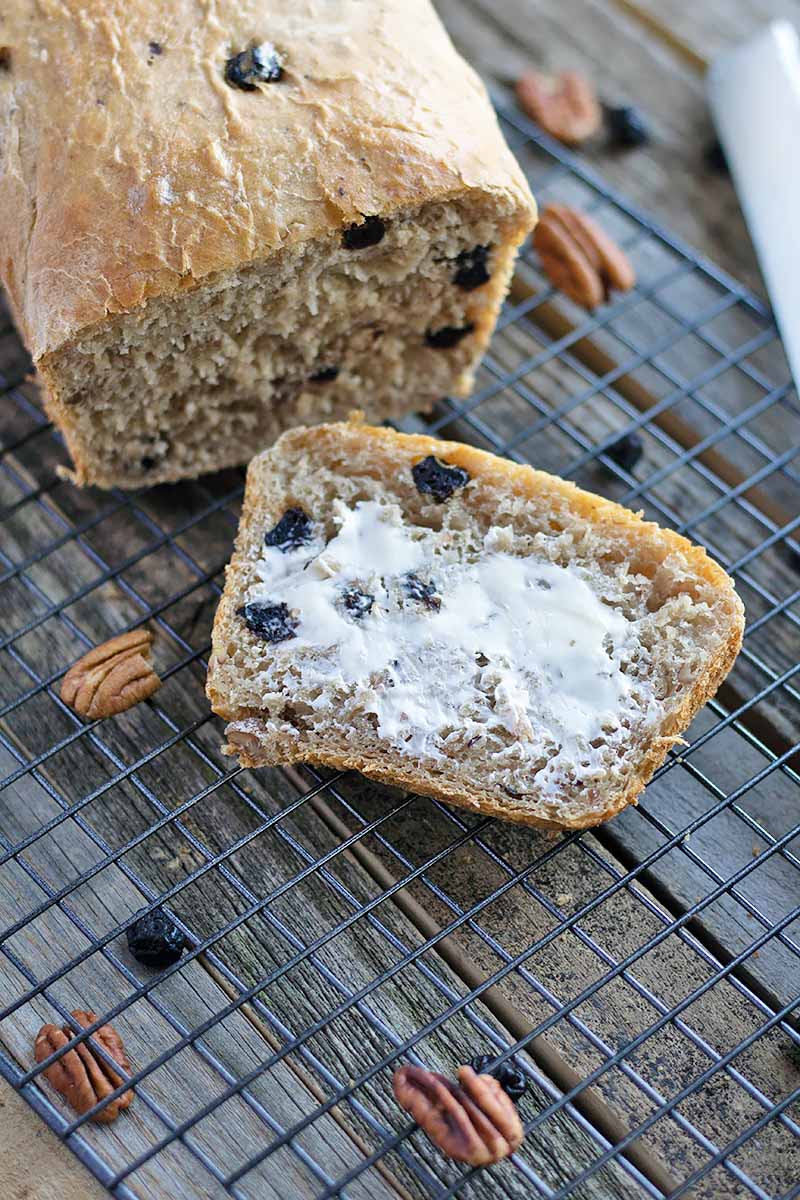
Let’s be real: making bread is time consuming.
Depending on the recipe, you need at least four hours dedicated to making it. Sometimes even days if you decide to soak the dry ingredients like in a soaked whole grain bread recipe.
Between mixing, kneading (you’ll LOVE our no-knead oat bread if you can’t stand this step!), rising, folding, and rising again, it is not something you can just throw together.
But that’s not a bad thing! In fact, there’s something so nerdily relaxing about the whole process. Every step is precise and based on science.
And by the time you’ve read and re-read the instructions, gone through all the steps, and finally have a loaf baking in the oven, you’re fully invested in the final product. Unless you have a lot of time, and extra ingredients, you can’t just make another loaf real quick if the first doesn’t come out.
Then, when you open the oven door and see a perfectly risen bread, pride starts to bubble up inside. And by the time you’re gently cutting the first slice and see that it is in fact bread and not a doughy mess, you can’t help but dance around the kitchen.
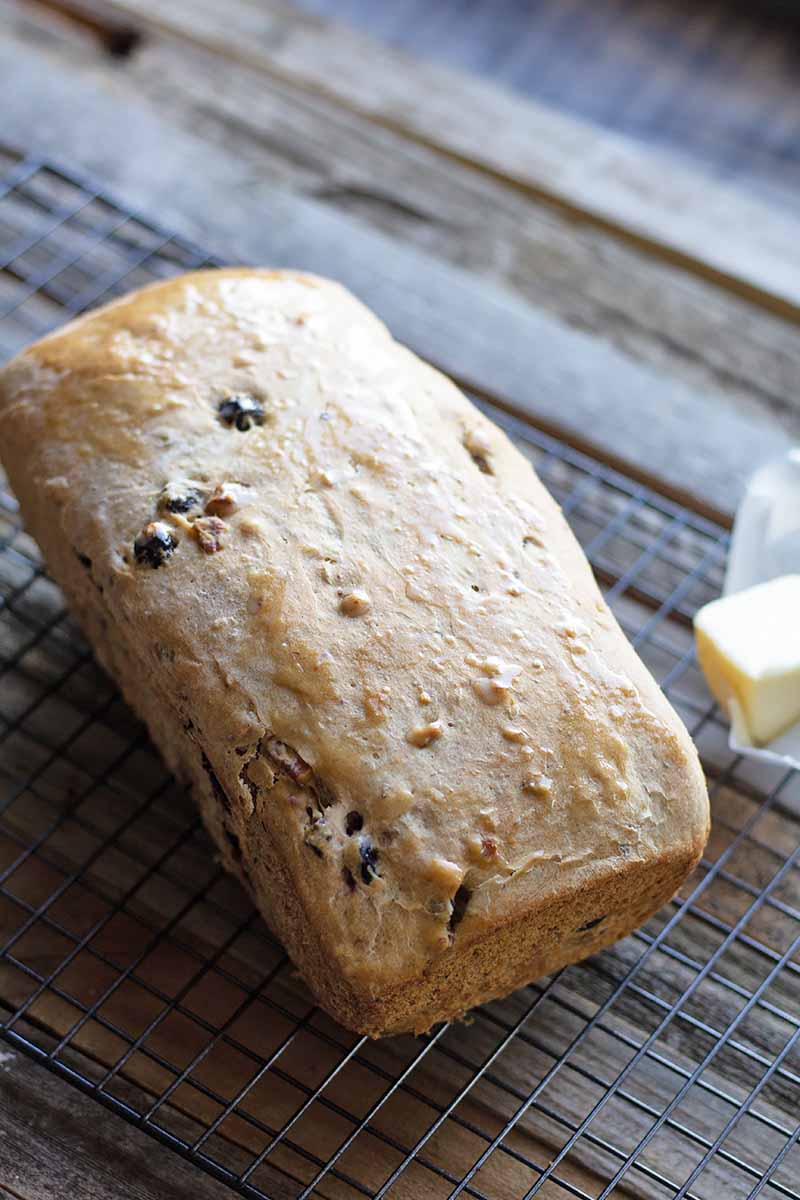
If you’re new to bread-making, this is a great recipe to start with as there’s no fancy shaping or cutting designs into the top. You don’t even have to worry about combining the wet and dry ingredients separately. Everything just gets thrown into a stand mixer and you’re off!
This recipe really is the perfect next step after making quick breads as the dough is simply mixed together, formed into a log, and then placed in a loaf pan.
And don’t let the term “whole wheat” intimidate you.
While some whole grain breads get a bad reputation for not being as soft and harder to work with, this bread has a key ingredient to ensure you end up with a spongy loaf that still packs in the nutrition of a whole grain baked good:
White whole wheat flour.
It may sound like an oxymoron, but I promise it’s not too good to be true.
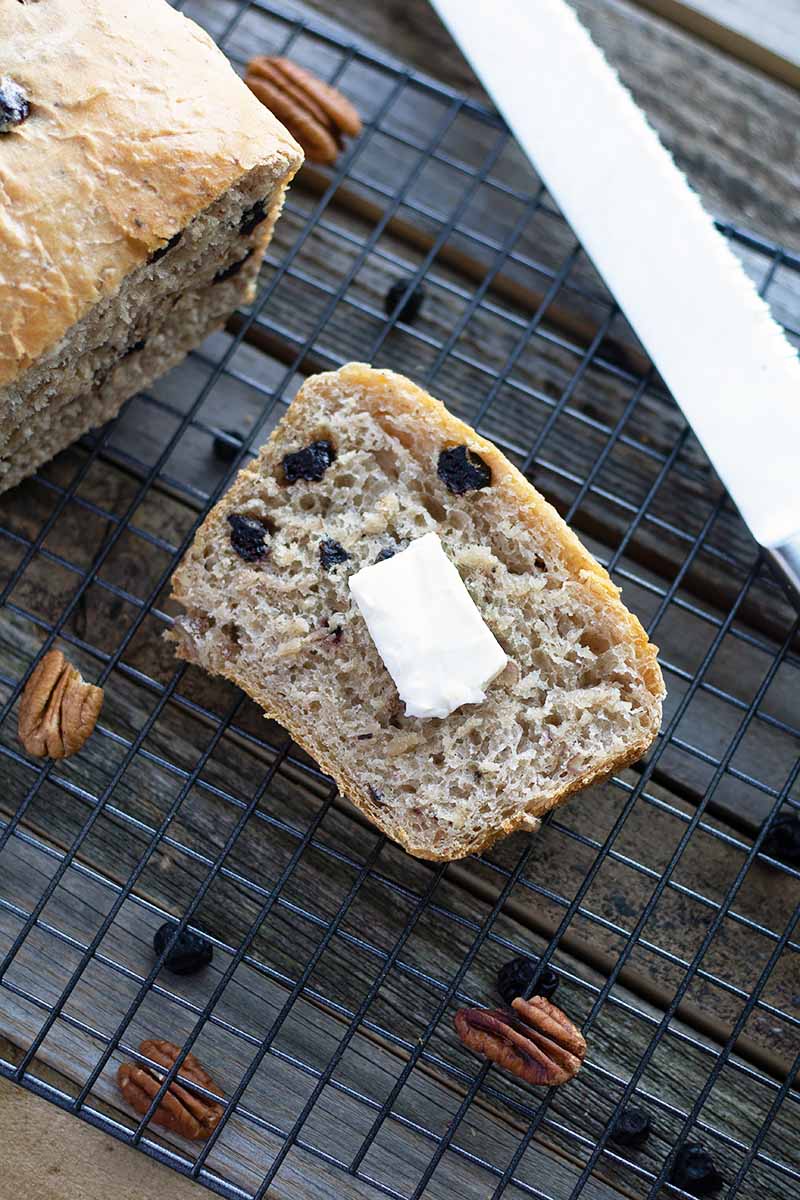
White whole wheat flour is simply whole wheat flour that’s milled from a lighter variety of wheat. As a result, the flour, and the baked goods it’s used in, end up softer and lighter than traditional whole wheat, yet still retain all the fiber, vitamins, and minerals of the whole grain.
Next, let me tell you about the fruit. While dried cranberries or raisins are common bread ingredients, this time I went and changed things up by using dried blueberries.
Have you ever seen dried blueberries? Like really looked at them?
They’re adorable!
Unlike dried cranberries that are on the flatter side, dried blueberries still have that round blueberry shape, but are just smaller and shriveled up a bit.
While this recipe doesn’t require a large quantity of dried blueberries, they still provide a little health boost. Fresh blueberries are high in antioxidants – compounds that protect against chronic disease and inflammation.
As I’m new to dried blueberries, I was curious whether or not they contain the same amount of disease-fighting properties as fresh. Luckily, it turns out other people have wondered the exact same thing!
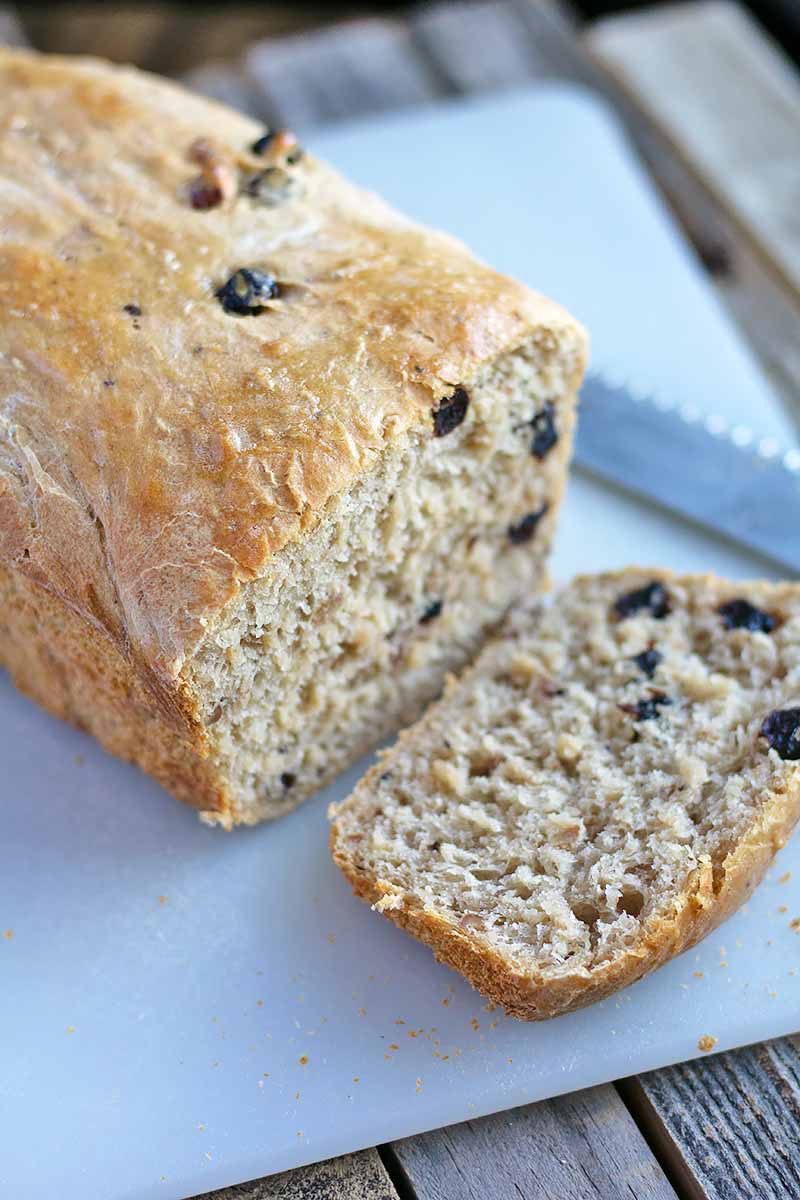
A study published in the Journal of Biomedicine and Biotechnology compared the antioxidant activity of fresh versus dried blueberries. They found that the drying process doesn’t affect the antioxidant content of blueberries, as there were no significant differences between the fresh and dried ones. Pretty cool!
However, just as with any dried fruit, dried blueberries are a more concentrated source of sugar and calories compared to fresh. So, while perfect for sprinkling into our dough, it’s good to keep portion sizes in check when feeling the need to munch while waiting for the dough to rise.
Tart and sweet, the dried blueberries also add brightness to the nutty, more earthy flavors of the whole wheat flour and pecans.
While delicious on its own, my favorite way to eat it is with a smear of cream cheese. I also think it would be perfect bread for a turkey and brie sandwich, or for a vegetarian option like a hummus, avocado, and sun-dried tomato sandwich.
But the loaf didn’t last long enough for me to try it.
In fact, between my husband and I, we finished off the entire loaf in three days. I like to point out that we also had made a chicken noodle soup, which was a perfect pairing with the bread, but I guess that doesn’t really change the fact that we devoured it quickly.
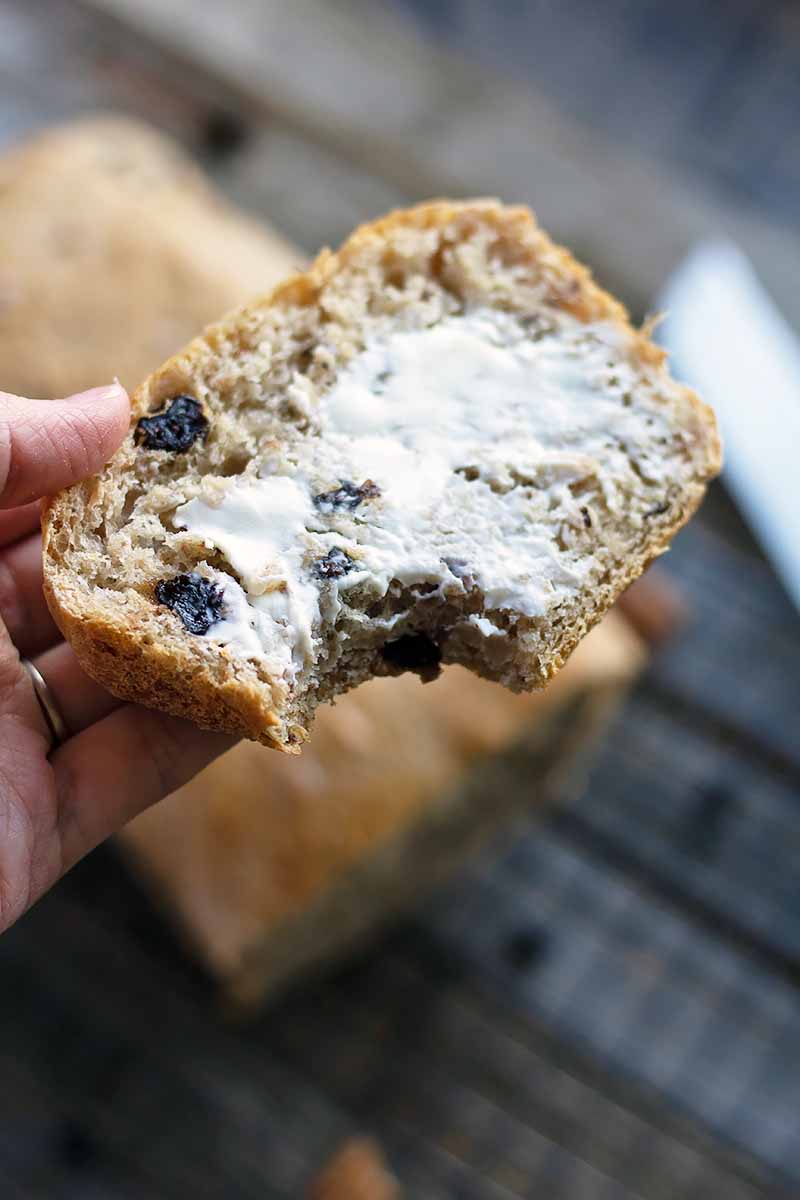
So, whether this is your first introduction to yeast breads or you’re simply looking for a new recipe to try out, this whole wheat pecan bread is well worth devoting your morning or afternoon to making it.
Print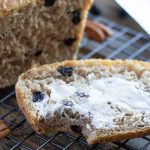
White Whole Wheat Pecan Bread with Dried Blueberries
- Total Time: 2 hours, 50 minutes to 4 hours, 55 minutes
- Yield: 1 loaf (12 slices) 1x
Description
Looking for a healthy, homemade bread recipe? This whole wheat pecan bread with dried blueberries is perfect on its own or as a sandwich.
Ingredients
- 1 tablespoon canola oil, plus more for greasing
- 1 cup lukewarm water*
- 2 tablespoons honey
- 1 1/4 teaspoons salt
- 1/2 cup pecan pieces, toasted
- 1/2 cup dried blueberries
- 3 cups (340 grams) white whole wheat flour
- 2 1/2 teaspoons instant yeast
- Unsalted butter (optional)
Instructions
- Lightly grease a large mixing bowl and set aside.
- In the bowl of a stand mixer, combine all ingredients except the butter and stir until a soft dough forms.
- Using a stand mixer, beat the dough until it no longer sticks to the sides of the bowl and becomes more firm.
- Switch mixer attachment to a bread hook and knead dough for 7-10 minutes, until smooth and slightly sticky.
- Transfer dough to the greased bowl, cover with a damp tea towel or plastic wrap that’s been lightly greased, and allow dough to rise for 1-2 hours. It should be puffy and nearly doubled in size.
- Lightly grease an 8 ½-by-4 ½-inch loaf pan and set aside.
- Gently deflate the dough and transfer to a lightly greased surface. Shape dough into an 8-inch log and transfer it to the prepared loaf pan.
- Tent the pan with greased plastic wrap and let rise again for 1-2 hours, or until it’s risen 1-2 inches above the side of the pan.
- Once bread is almost done rising, preheat oven to 350°F.
- Place bread in preheated oven for 20 minutes. Cover with aluminum foil and continue to bake another 15-20 minutes, or until lightly browned and the bottom of the bread sounds hollow when tapped. If you have a thermometer, the inside of the bread should reach 190°F.
- Remove from oven and carefully remove from the pan and transfer to a cooling rack. For extra flavor, gently rub a stick of butter over the top before it cools.
Notes
*may need an extra 2 tablespoons in the winter or in drier climates
- Prep Time: 15 minutes
- Cook Time: 35-40 minutes
- Category: Bread
- Method: Oven
- Cuisine: Baked Goods
Keywords: bread, whole wheat, white whole wheat flour, dried blueberry, pecan
Cooking By the Numbers…
Step 1 – Grease Large Mixing Bowl and Measure Ingredients
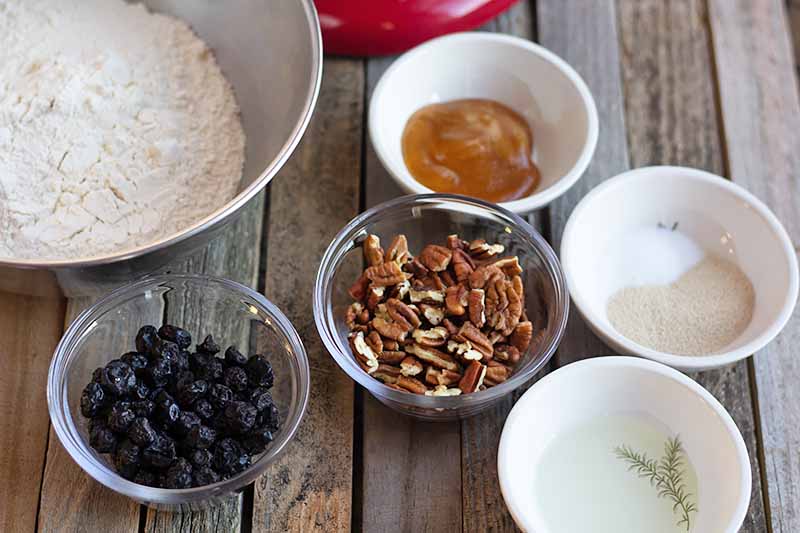
Lightly grease a large mixing bowl with canola oil and set aside.
Measure out all of your ingredients, and set out all the baking tools you’ll need.
If you haven’t already, toast the pecans lightly in a dry frying pan on the stove, or on a baking sheet in a 350°F oven for about 5 minutes. Keep an eye on it so the nuts don’t burn!
Step 2 – Combine Ingredients and Mix
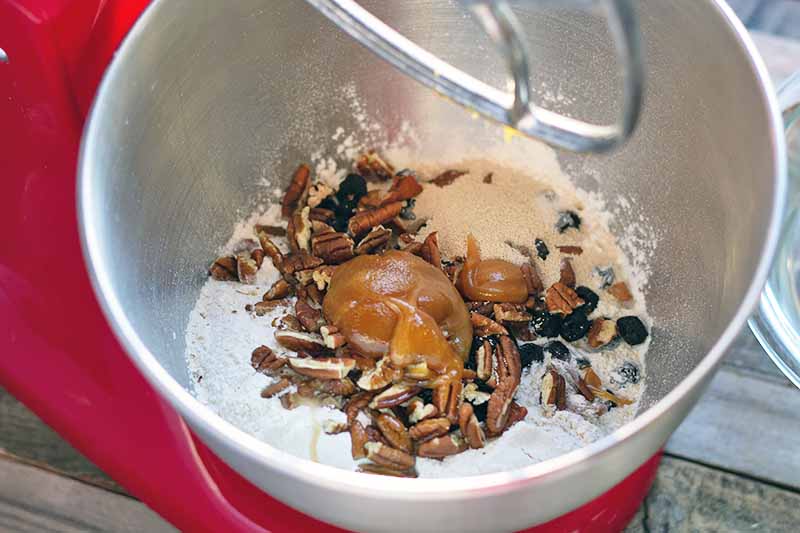
Place all ingredients in the bowl of a stand mixer.
Using the paddle attachment, mix on medium speed (I used speed setting 4) until the dough no longer sticks to the sides of the bowl.
Step 3 – Knead the Dough
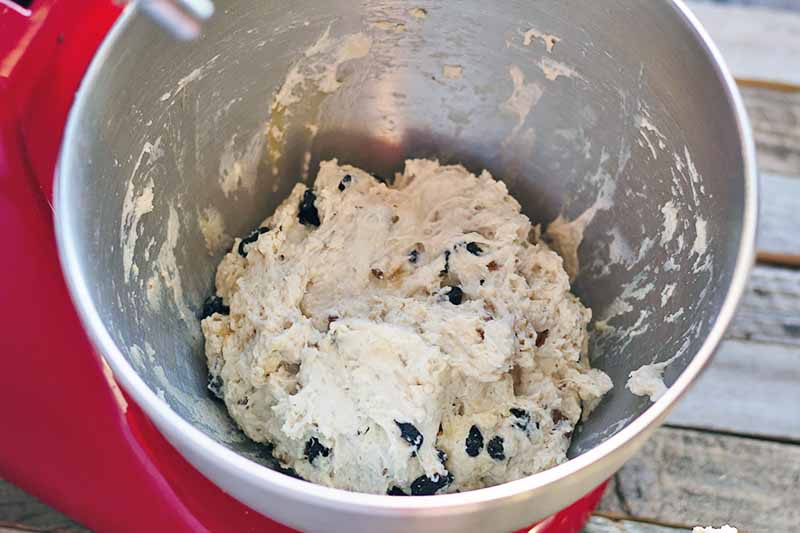
Switch the mixer attachment to a bread hook and knead the dough for 7-10 minutes on low speed, until smooth and slightly sticky.
A good check is to lightly press your finger into the dough. If it springs back (hey there, gluten!), then it’s ready. If it’s not ready, continue kneading for another 1-2 minutes and check again.
Step 4 – Rest Dough
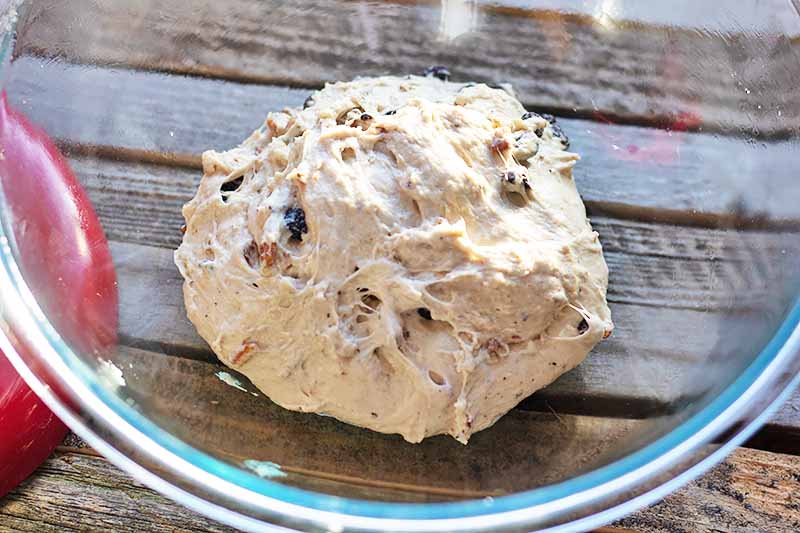
Transfer kneaded dough to the greased bowl, cover with a damp tea towel or plastic wrap that’s been lightly greased, and allow dough to rise for 1-2 hours in a warm, dry spot in your kitchen without any drafts.
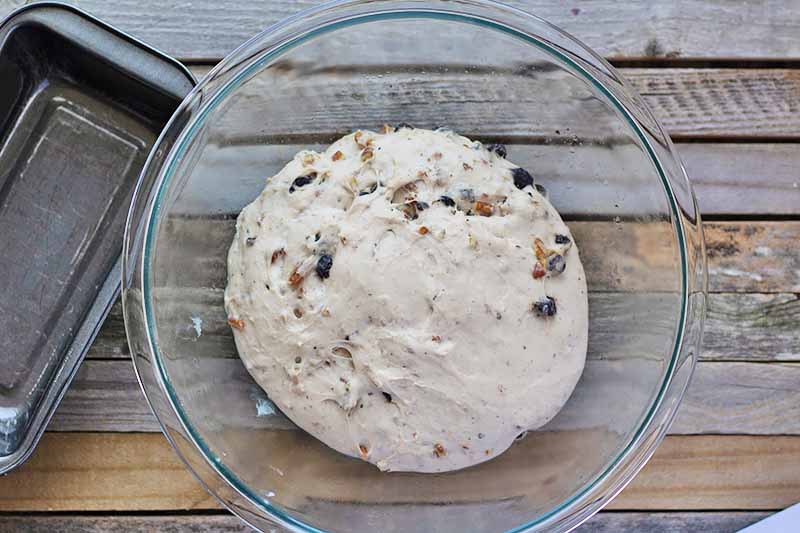
You’ll know it’s ready when it’s puffy and nearly doubled in size.
Step 5 – Prepare Loaf Pan and Shape Dough
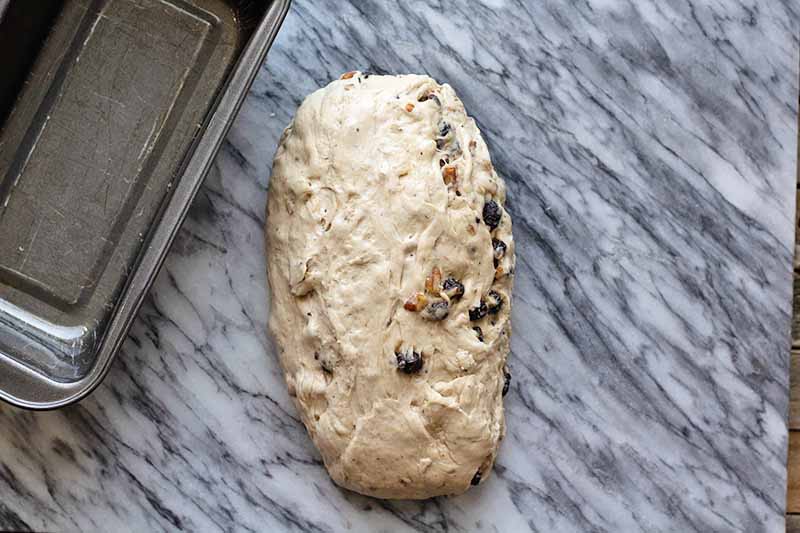
Once dough is done resting, lightly grease a loaf pan and set aside.
Gently deflate the dough by pressing into the center, and transfer to a lightly greased surface.
Roll dough into an 8-inch-long log and transfer it to the prepared loaf pan with the seam side down
Step 6 – Cover and Final Rest
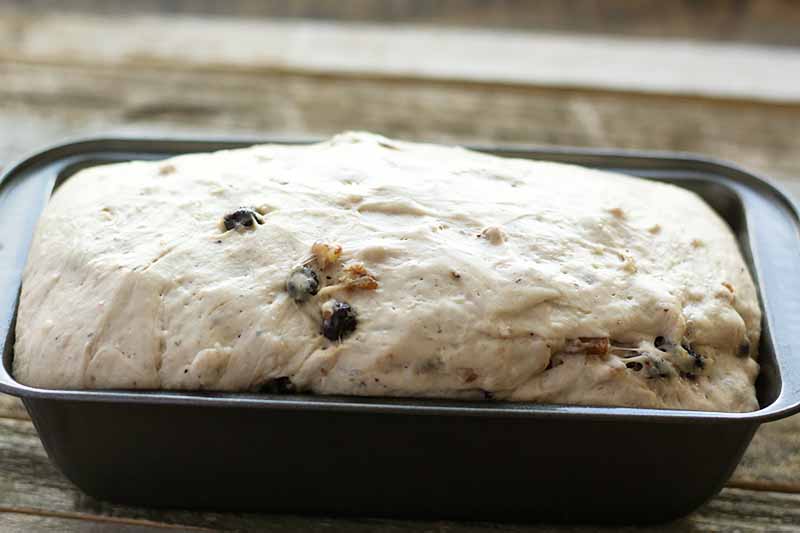
Tent the pan with lightly greased plastic wrap and let it rest again, this time for 1-2 hours.
The dough is ready when it’s risen 1-2 inches above the rim of the pan.
Once it is almost done with the final rest, preheat your oven to 350°F.
Step 7 – Bake
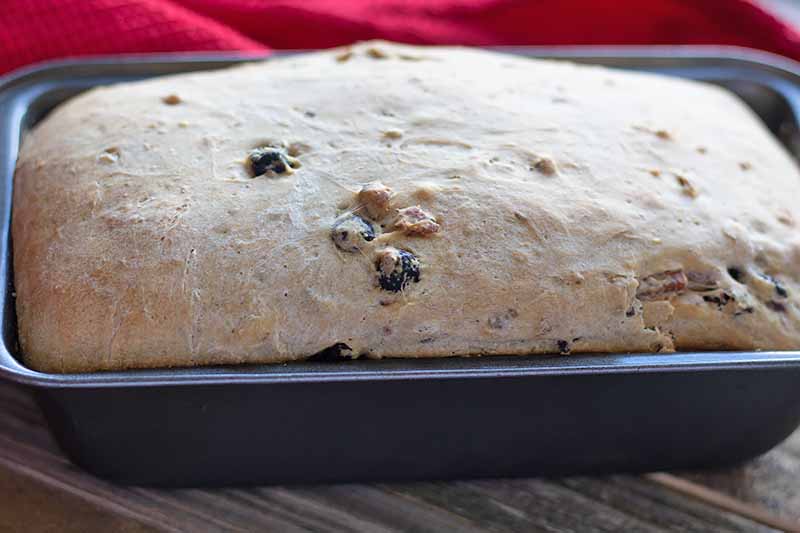
Remove plastic wrap and place the pan in the preheated oven. Bake for 20 minutes.
After 20 minutes, cover with aluminum foil and continue to bake another 15-20 minutes, or until the top is lightly browned and the bottom of the bread sounds hollow when tapped. If you have a thermometer, the inside of the bread should reach 190°F.
Step 8 – Remove from Pan and Cool
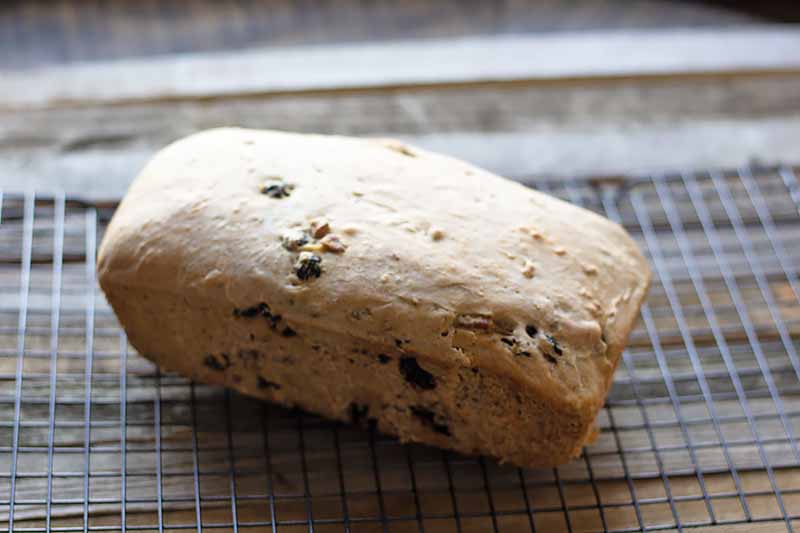
Once the bread is ready, remove the pan from the oven and carefully take the bread out of the loaf pan. If it sticks a bit, carefully run a butter knife around the edges of the pan to loosen it.
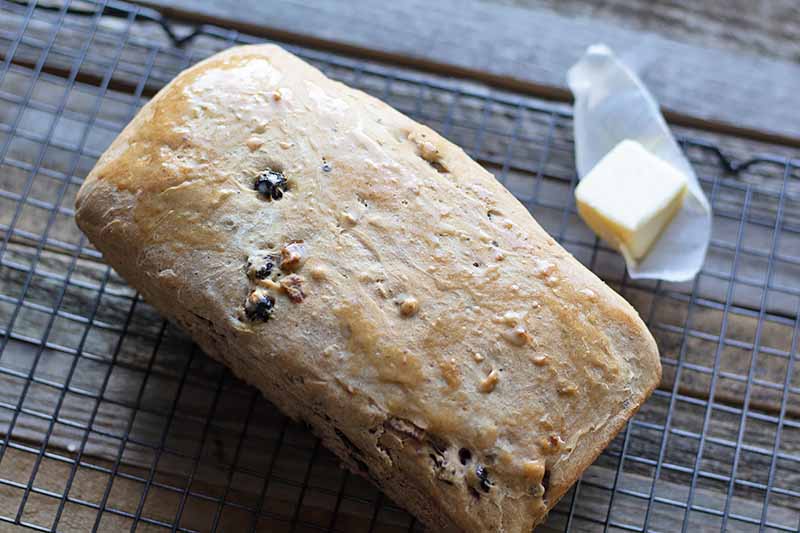
Place the loaf on a cooling rack. For extra flavor, gently rub a stick of butter over the top while it’s still hot.
Eat Immediately or Freeze for Later
While it’s true that homemade bread tastes best the first day you make it, there are ways to make all your hard work last longer.
If you plan to eat the whole loaf within 3-5 days (and I don’t blame you if you do), you can keep the loaf tightly wrapped in plastic wrap at room temperature.
Just be sure to fully cool the bread before storing it to prevent condensation from forming, which can ruin the texture of your loaf.
If there’s no way you’ll get through all twelve slices that quickly, the freezer is a great option.
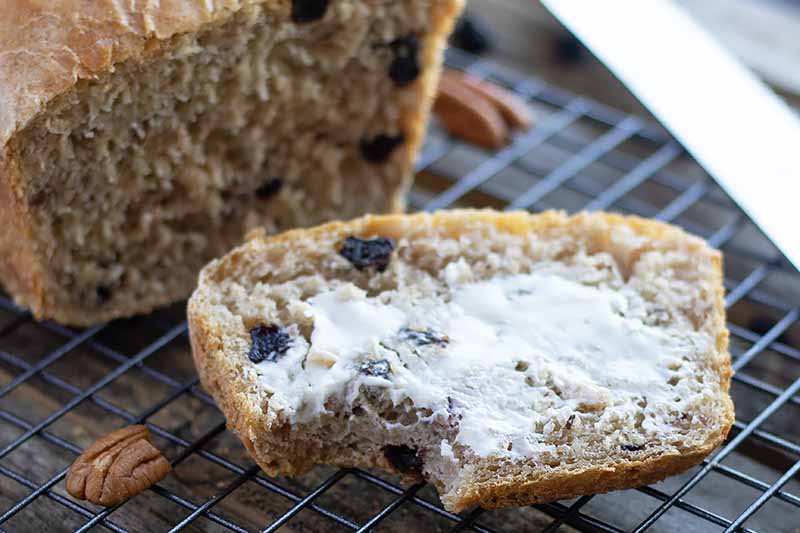
To freeze, slice the bread and wrap each slice in plastic wrap. Place the wrapped slices in a resealable freezer bag. For the best flavor and texture, use within 3 weeks.
When ready to use, simply take a slice out of the freeze and let it thaw in the fridge overnight, or heat in the toaster.
Hooked on making bread? Check out these other tried-and-true Foodal recipes:
Do you find bread making relaxing or nerve-racking? We’d love to hear in the comments below! And if you try the recipe and love it, let us know by giving it a five-star rating.
Photos by Kelli McGrane, © Ask the Experts, LLC. ALL RIGHTS RESERVED. See our TOS for more details. Originally published by Shanna Mallon on April 9, 2010. Last updated: November 29, 2022 at 9:04 am. With additional writing and editing by Allison Sidhu.
Nutritional information derived from a database of known generic and branded foods and ingredients and was not compiled by a registered dietitian or submitted for lab testing. It should be viewed as an approximation.
The written contents of this article have been reviewed and verified by a registered dietitian for informational purposes only. This article should not be construed as personalized or professional medical advice. Foodal and Ask the Experts, LLC assume no liability for the use or misuse of the material presented above. Always consult with a medical professional before changing your diet, or using supplements or manufactured or natural medications.
About Kelli McGrane, MS, RD
Kelli McGrane is a Denver-based registered dietitian with a lifelong love of food. She holds undergraduate and master’s degrees in nutrition science from Boston University. As a registered dietitian, she believes in the importance of food to nourish not only your body, but your soul as well. Nutrition is very personal, and you won’t find any food rules here, other than to simply enjoy what you eat.

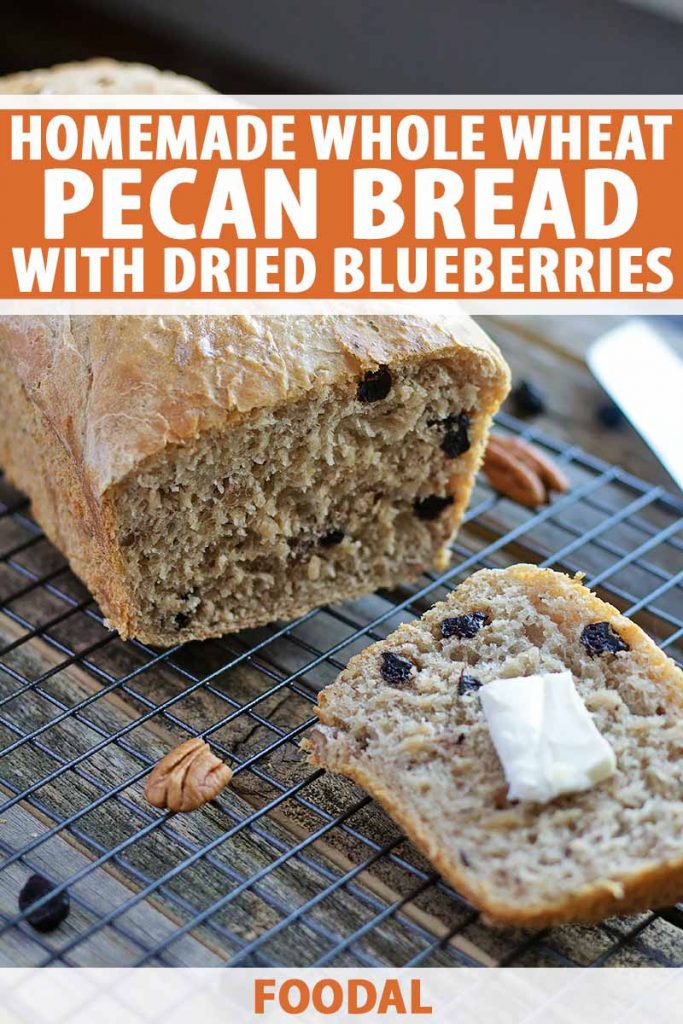

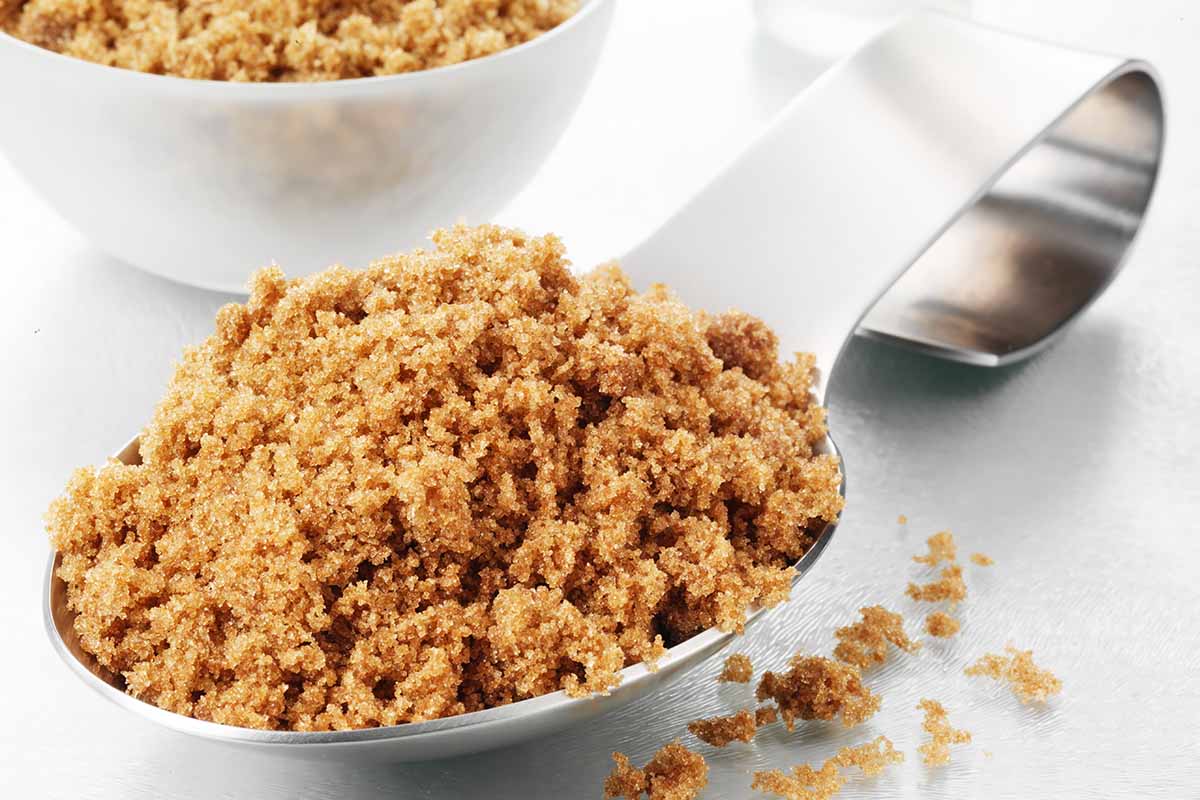
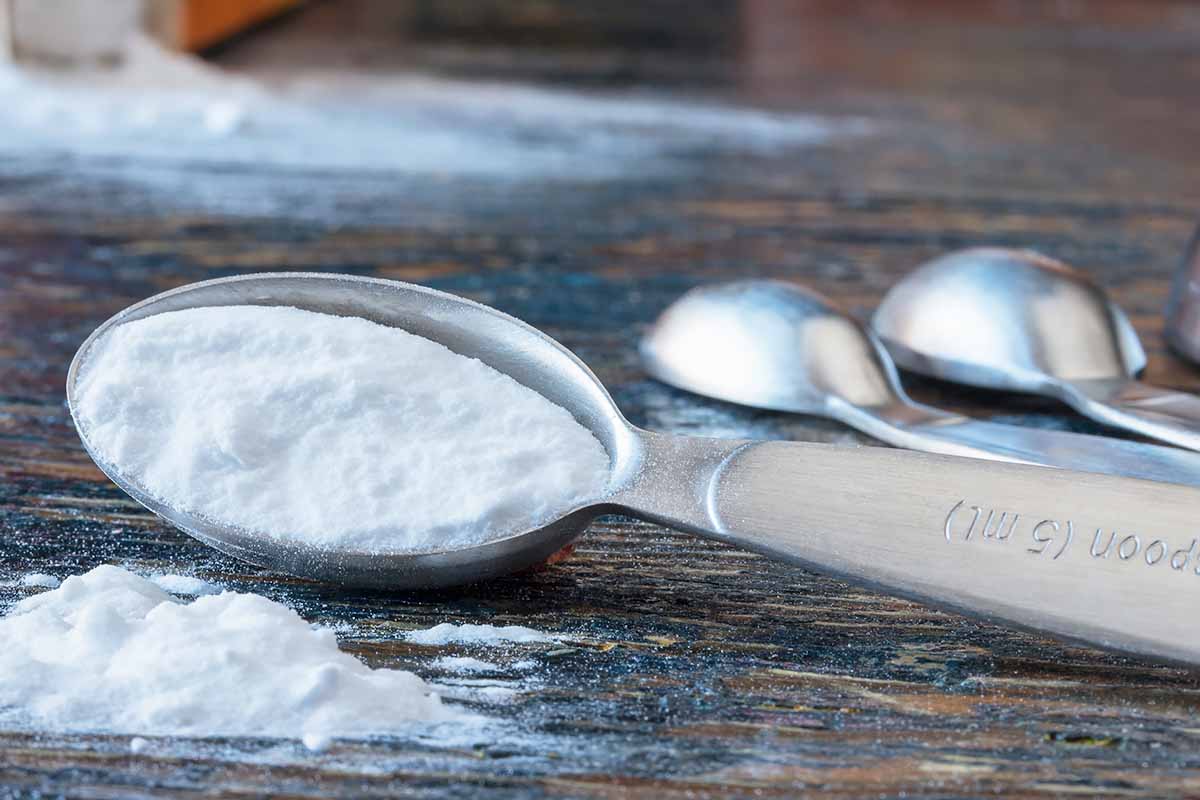
I haven’t tried bread in a while. Maybe I need to get back on the bread horse and try again.
Looks excellent.
My favorite food item to make & bake is bread.
Unfortunately, it it my best friend(comfort food) & my worst friend(goes to my waist).
But I can’t live without it, so I tell myself.
Great looking bread. I love the look.
Your bread looks just perfect!
yummity yum yum yum.
You are my bread-baking goddess inspiration! This is one of my major goals this spring/summer–to jump into the wide, wide world of yeast with open arms. Glad someone’s jumped in first 🙂
The pecans in this loaf sound amazing…delicious Loving your blog!
I think I’ll have to try this immediately. I can’t wait to try it!
Great post! 🙂
I haven’t baked bread that would really be a bread in a while. I can’t count the banana bread and apple bread I like making so much b/c I’d never make a sandwich out of those, the crumb is too delicate. Maybe french toast… But it’s like eating cake to me.
I need to make a nice bread soon. Maybe a baguette so I can make sandwiches for work. mmm….
I love this bread recipe! And seriously, that sandwich sounds like heaven. I don’t make sandwiches enough, methinks…
I baked this up the other day. Turned out beautifully.
★★★★★
I’m so glad you liked it Amanda!
Made it, and it turned out well. The pecan and blueberry flavors are just enough without being overwhelming.
★★★★★